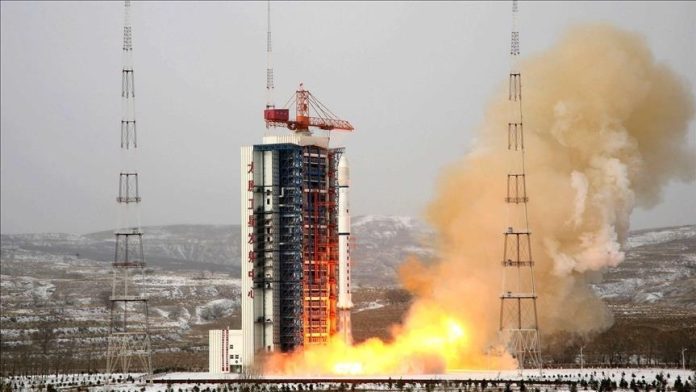The Changzheng-3B carrier rocket with the Tianwen-2 interplanetary station on board successfully launched from the Xichang Space Centre (China), Chinese media reported on Thursday.
The mission will collect samples from the small asteroid Kamo’oalewa in quasi-stationary orbit around earth and study comet 311P/PANSTARRS in the main asteroid belt between Mars and Jupiter. The station’s scientific work will last approximately 10 years.
The Tianwen-2 mission is a continuation of the successful launch of the Chinese rover to Mars as part of the Tianwen-1 mission and will be an intermediate step before the launch of the Tianwen-3 mission in 2028, which will collect samples from Mars and return them to earth. The name “Tianwen” translates from Chinese as “Questions to Heaven.”
The Tianwen-2 station will arrive at earth’s quasi-satellite, asteroid 2016 HO3 (Kamo’oalewa), on July 4, 2026. The asteroid, which is between 40 and 100 metres in diameter, orbits our planet at a distance of about 14 million kilometres. It is not a true satellite of earth, as it is gravitationally bound to the sun and will eventually leave our planet’s orbit. Nevertheless, its location makes it a convenient target for studying asteroids in their natural environment. Delivering soil samples to earth in a sealed capsule will provide a complete picture of the asteroid’s composition without the risk of damage or contamination by earth materials.
The station will attempt to collect soil samples from Kamo’oalewa in two ways: remotely and by landing on its surface. In the first case, samples can be knocked off the surface using a long manipulator and then captured in a collection capsule using pressurised gas. In the second case, the station will attempt to anchor itself to the asteroid’s surface using three manipulators with drills. This manoeuvre will not be easy, as Kamo’oalewa rotates relatively quickly, completing one rotation every 28 minutes.
If the mission is successful, the station will collect about 100 grams of samples, which will be dropped back to earth in 2027. This will make China the third country in the world, after Japan and the US, to achieve such a scientific feat. After that, Tianwen-2 will head for the core of the main belt comet 311P/PANSTARRS. This icy comet, with a diameter of up to 500 metres, is a rare object, as comets usually arrive from the distant reaches of the Solar System. However, comet 311P/PANSTARRS is of particular importance. Such objects are believed to have played an important role in bringing water to earth. The station will arrive at the comet in the early 2030s, and its study will begin in 2035, after which the mission will be completed.
